Artist(s) Tony G. Pentland Developer Krome Studios Melbourne Genre Shoot 'em up | Initial release date November 1990 Publisher LJN Mode Single-player video game | |
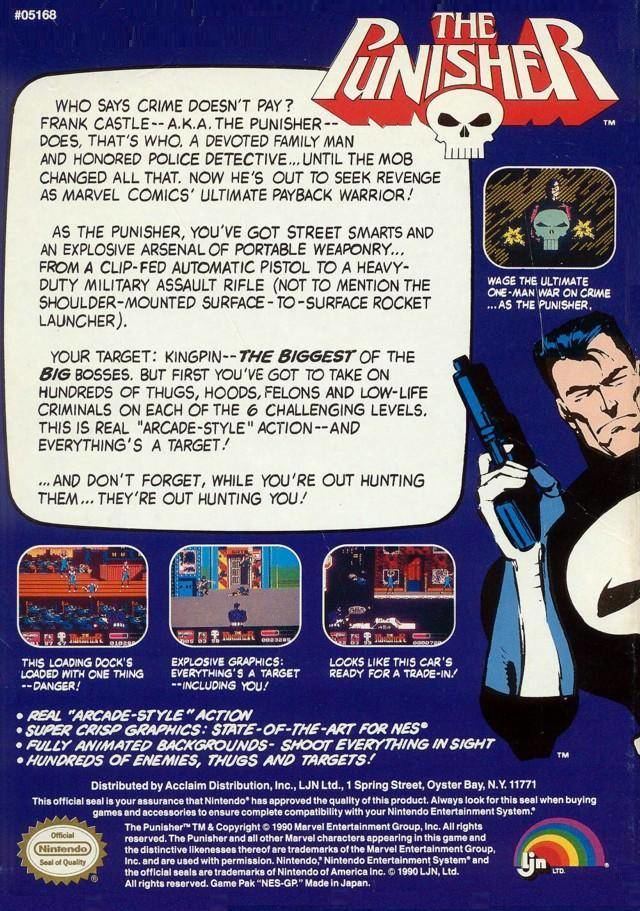 | ||
Director(s) Chuck Dixon
John Romita, Sr. Designer(s) Gregg Barnett
Paul Kidd Composer(s) Gavan Anderson
Tania Smith Platforms Nintendo Entertainment System, Game Boy Similar LJN games, Other games | ||
The Punisher is a 1990 video game developed by Beam Software and released by LJN, which stars the Marvel Comics anti-hero, the Punisher. It is one of the few NES rail shooters.
Contents
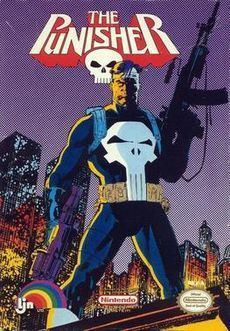
In the same year, there was also The Punisher computer game for Amiga and DOS systems, unrelated to this one and released by MicroProse.
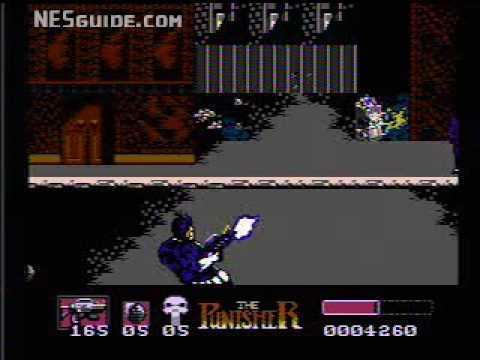
Premise
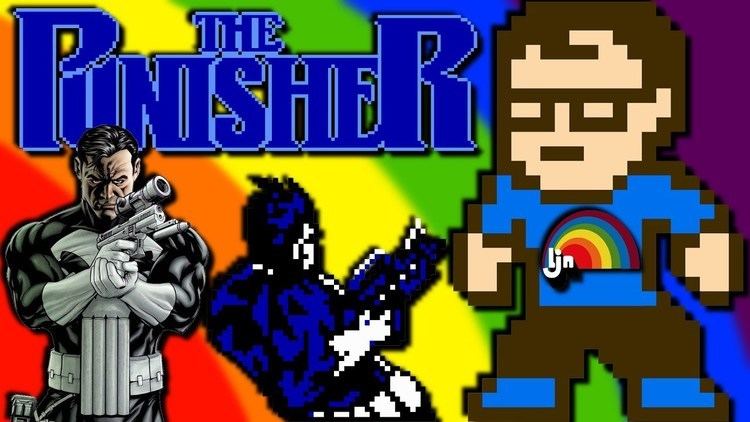
The Punisher's origin has been slightly altered from that of the original comic books, in the game he is a former detective instead of a US Marine who served in the Vietnam war.
Gameplay
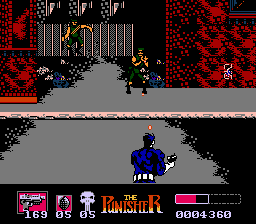
The player controls the Punisher character from an over-the-shoulder third-person perspective through various New York City locations, shooting thugs and battling supervillains Hitman, Jigsaw, Colonel Kliegg, Sijo Kanaka, and Assassin as bosses. The final boss is the Kingpin. Power-ups can be obtained by shooting them onscreen and include extra ammunition, a med kit, Kevlar, a bazooka, a machine gun, and grenades.
At times Daily Bugle newspapers appear and gives the player tips.
Reception

Fred Rojas of Gamminghistory101 expressed that he was quite impressed with the games graphical prowess and also praised what he considered to be an interesting addition to the traditional light gun format and the brawler element, which is key to completing two of the boss battles, that requires the player to have more than crack shot skills. Conversely he did criticize the lack of music in the game and stated:
“All of the levels seem eerily quiet and the saxophone player that shows up in the most odd of times and location provides the only break from the action, but his song is neither interesting enough nor is there any incentive to keep him alive.”
Rojas also criticized the boss battle with the Kingpin for being frustratingly difficult but finished with that he considered the game to be as impressive today as it was when it first came out and that it is a gem among Nintendo’s initial console.
Videogamechoochoo.com's reviewer Ryan expressed disappointment at the developers' decision to lock Frank Castle into the bottom of the screen and let the player slide him around, ending up as “one of the few” rail shooters for NES. He also stated:
“It’s easy to see why- attempting to both dodge bullets and position the crosshairs with just the D-pad is an obtuse, miserable experience.”
Ryan also criticized the game for its lack of soundtrack:
“There’s a title theme, and a menu theme that gets re-used for boss fights, and that’s about it. The only sounds that accompany you through the levels are those of gunfire and explosions. Occasionally a bluesy jazz man will spawn and play you a morose 8-bit saxophone tune, but like everything else in the game, you can just blow him to shreds, silencing him for good.”
Her goes go on to applaud the game for its accurate portrayal of the Punisher, the violence he commits and his antagonists. Likewise he also complimented the graphics and stated that he was surprised at how much action took place on the screen at the same time and added that Beam Software put a lot of effort into the spritework.
Blair Farrell of Comic Gamers Assemble stated that the game would have benefited from having being able to use the NES Zapper but added that the game's design added more depth to the simple shooting mechanics.
“Controls are easy enough in The Punisher: Move the d-pad around the screen until it lines up with a target, press “A” to shoot and “B” to lob grenades and other explosives. When not holding down the shoot button, the Punisher character will move left and right across the screen, allowing the player to dodge some incoming enemy fire and projectiles, thus increasing your overall chance of survival. Had Beam just made this a simple light gun game, this mechanic would either be nonexistent, or awkwardly controlled with both the gun AND a controller. By adding in simple movement, it adds depth to what could have been a pretty shallow experience.”
James Rolfe, also known as the Angry Video Game Nerd did a crossover episode with Patrick Contri, also known as Pat The NES Punk, where they reviewed the game together. Contri described the game as very violent, especially by NES standards. He also commented on the lack of music, stating that it makes for a somewhat tense and eerie experience when playing the game. Contri goes on to say that the graphics are fine but that the character sprites could have been better defined. Contri finished with stating that the game is fun for what it is. He and Rolfe both agreed that they considered the game to be one of the best if not the best LJN game.
Game Boy port
In 1991 the game was ported to the Game Boy. The Game Boy version, titled The Punisher: The Ultimate Payback, had several differences, including an appearance from Spiderman.
